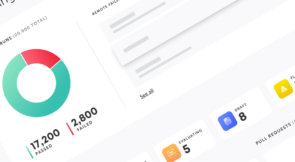2020 is (finally) ending! Let’s go back and check the accuracy of our predictions. Who had, “major pandemic disrupting the year?” How about, “record hurricanes and forest fires in the US?” Murder hornets, anyone?
Yeah, this year was a big FAIL in a lot of respects. Hopefully, you were all able to stay safe and used some remote working time to bone up on your testing skills.
Let’s put 2020 behind us by looking at some of our bold predictions for 2021. We gathered some of our best forecasters and prognosticators to make some wild-ass guesses about what will happen in 2021. We had some arguments discussions. We will present them in a more lively webinar format with the results of your ratings on December 16. [REGISTER HERE]
Here they are. Be sure to rate them!
The use of Java in test automation will decline significantly. Python, JavaScript, and Kotlin will increasingly be used in test automation.
Let’s face it, Java isn’t cool anymore. Developers and Automation Engineers don’t want to learn things that aren’t cool. They want to learn the technologies that are growing. JavaScript has consistently been the top used coding language, Typescript is moving up quickly and Python moved into spot number two in 2020 according to the GitHub Octoverse survey. (Kotlin isn’t on this chart, but we said “bold” predictions).
What do you think? Rate this prediction
Selenium is not dead. It will become more popular in the next few years, starting in 2021.
Selenium 4 will become bidirectional moving from a REST protocol to a WebSocket protocol. This isn’t really a secret—they are working on a bidirectional protocol and expect to have an initial version in 2021. There is less incentive to use non-standard stuff and instead use Selenium BiDi.
What do you think? Rate this prediction
End-to-end testing coverage will accelerate in 2021.
There’s a lot of room for improvement. According to our 2020 E2E test automation survey, almost 75% of respondents indicated that they have automated less than half of their tests. This includes 12% that have automated none of their tests. Yet, we know that test automation is key to releasing quality software faster. AI-based E2E testing is making it much easier for companies to increase their test coverage, shorten release cycles, all while reducing maintenance costs.
What do you think? Rate this prediction
Component functional testing will grow by 25% in 2021.
Component testing is functional testing focused on smaller chunks of code than E2E testing. The popularity of component testing will grow for two reasons: 1) if a component test breaks it’s easier to debug because there are fewer moving parts, and 2) the push towards containers and improvements in container orchestration will accelerate their use in applications. Testing will align more closely with how the functionality is delivered—in containers.
What do you think? Rate this prediction
Open source test automation frameworks will fall further behind AI-based tools in terms of test stability.
Some frameworks, like Puppeteer, are used more for browser automation than testing. Others, like Selenium, are making incremental changes to improve stability, but don’t include AI. Why? It’s not easy to fundamentally change how you do test automation. Bolt-on solutions to technical debt have never worked. At the same time, AI-based tools continue to learn, improve, and adapt, widening the gap.
What do you think? Rate this prediction
AI-based testing becomes mainstream and replaces older technologies.
Similar to the prediction about AI-based testing and open source frameworks, some of the same factors are at play when it comes to traditional functional testing tools. Bolting on AI to solutions riddled with technical debt won’t meet customer needs. Eventually, some of these vendors will attempt to acquire AI-based tools in an attempt to retain their customer base.
What do you think? Rate this prediction
AI-based E2E testing tools will add capabilities and encroach on other testing areas like performance testing.
It’s a normal cycle within software product development. The team starts by trying to solve a particular problem. As they get better at solving that problem, they look for places to expand, often by addressing adjacent markets. Enterprises buyers often drive these trends as they prefer to deal with fewer vendors and pick vendors who deliver broader solutions.
What do you think? Rate this prediction
2021 will be the (real) start of autonomous testing.
We have been talking about the dawn of a new generation of testing for several years. One where you can simply point a tool at your application and it will create the tests automatically. Well, we’re still waiting, but we might be getting closer. There are tools for helping us understand user journeys. However, creating a stable, valid test is another thing, it requires validations, test data, and flexibility to handle unique situations. The start of the autonomous testing era will pair automatically capturing user journeys with manual test configuration, and 2021 will be the year in earnest.
What do you think? Rate this prediction
Stand-alone QA teams will shift to QA members on integrated development teams.
Dogs and cats living together. Okay, it won’t be Draconian. Development methodologies aimed at accelerating releases are putting pressure on teams to change the way they do testing. Modernizing development processes better collaboration without any gaps in the process. This means developers will do more testing and QA Automation Engineers will be on more integrated agile teams rather than separate teams that handle testing at the end of a development cycle.
What do you think? Rate this prediction
Testing in Production will grow—in certain customer segments.
Why test at all? Why not just let your users test it for you? In our 2020 E2E test automation survey, testing in production was rated as the third-highest (36% of respondents) trend expected over the next three years (behind AI-based testing at 79% and continuous testing at 37% of respondents). The challenge with testing in production, is you need to have a lot of users so that rolling out a feature to a fraction of your users still provides a meaningful test. So, it can grow in certain segments like consumer-focused businesses or large enterprises, but the vast majority of growing businesses likely don’t have the numbers to make it work.
What do you think? Rate this prediction
Connecting to the CI will expand the use of E2E testing.
A theme throughout these predictions is the move to more agile development methodologies with earlier or continuous testing. AI-based E2E testing tools are maturing and the tests are increasingly stable. This helps generate confidence that the tests will identify bugs and without slowing down the release cadence. With confidence, more E2E tests will be run in the CI automatically. Success will lead to broader usage.
What do you think? Rate this prediction
Developers will move away from coded test automation frameworks to AI-based solutions.
Developers use coded test automation frameworks largely because they are free. But few developers like spending their time creating or updating tests. And when they consider the cost (real and intangible) of using developer resources to maintain tests, the financials will back this decision.
What do you think? Rate this prediction
Bonus: Predictions from the Testim Community!
We’ll see an increase of Machine Learning Testing activities, it is not going to be only AI-based testing tools.
Testers will help Data Engineers and Data Scientists to provide high-quality Machine Learning Models.
–Enrique Decoss, Test Architect
What do you think? Rate this prediction
More and more companies will start to ditch their unsuccessful home-grown Selenium implementations to move towards Test Automation SaaS providers.
Let those providers do the hard work around the framework and focus your team on writing good tests.
–Carina Gerry, Director, Engineering Quality at SalesLoft
What do you think? Rate this prediction
We’re going to see a shift in focus and begin to include (more reliably) accessibility audits as part of the automated process.
In the beginning, it will address basic industry-accepted accessibility rules/best practices that improve the user experience. I imagine it could be an integration with WCAG or the development of a new feature that would execute an accessibility audit on any given webpage.
-Erin Hess, Accessibility Advocate and Lead QA at DUZY
What do you think? Rate this prediction




